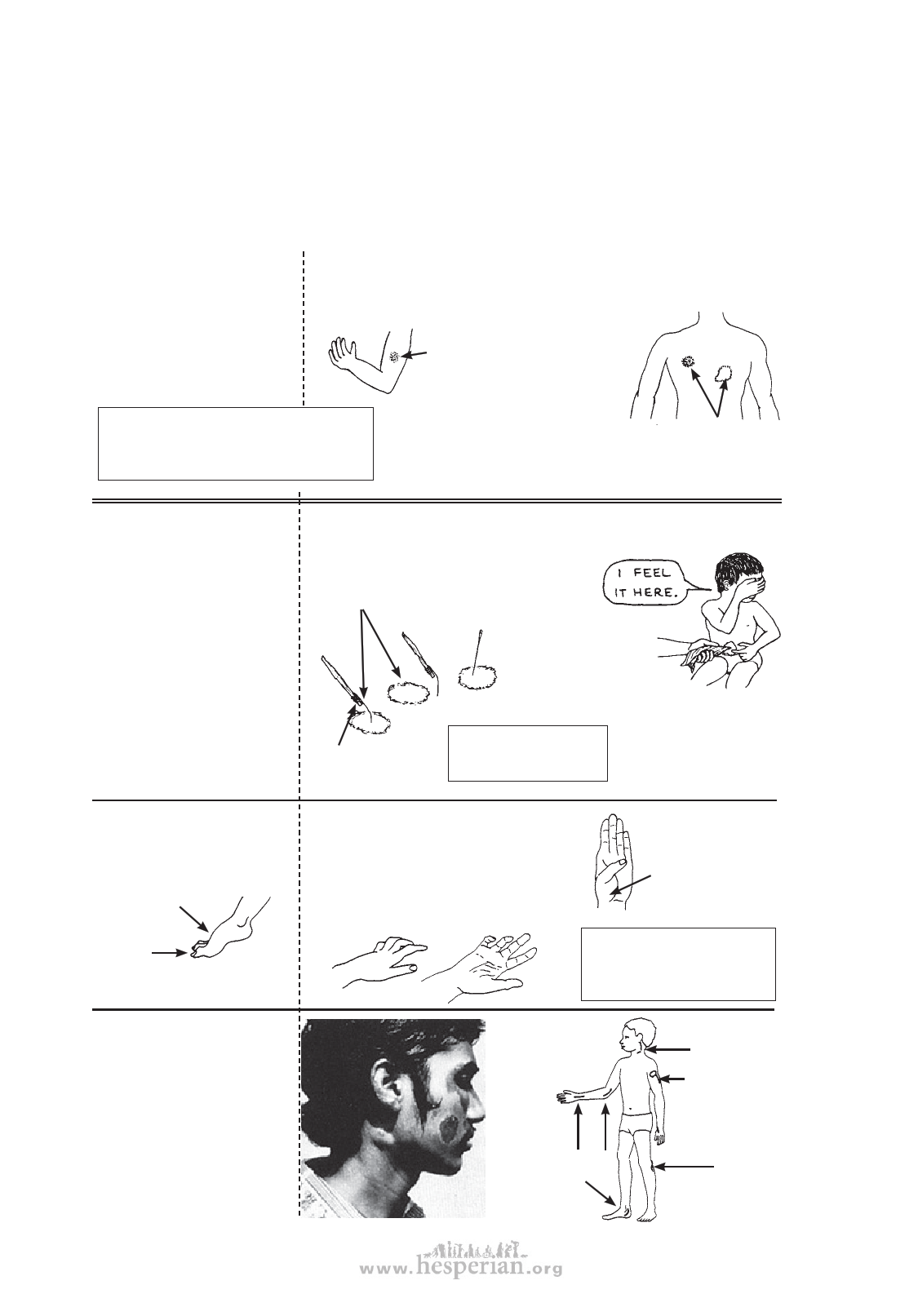
216 chapter 26
Checking children for signs of leprosy
In areas where leprosy is common, health and rehabilitation workers should work
together with parents and schoolteachers to check all children regularly for early signs
of leprosy. Most important are regular checkups of children in homes where persons are
known to have leprosy. Checkups should be done every 6 to 12 months and should be
continued for at least 3 years.
EARLY SIGNS
WHAT TO LOOK FOR
A slowly growing patch on the
Examine the whole body for skin patches, especially the face, arms, back,
skin that does not itch or hurt.
The patch may be somewhat
butt, and legs.
different in color from the
surrounding skin. (Patches of
leprosy are never completely
white, and are not scaly, except
during a reaction—see p. 219.)
If you find a slightly pale
patch without a clear edge,
keep watching the spot.
Unless feeling is reduced inside
the patch, look for other signs
Note: In early skin patches, feeling is often
normal, or nearly so. If feeling is clearly
reduced inside a patch, leprosy is almost
certain.
before deciding it is leprosy.
(Many children have similar
pale spots on cheeks and arms
that are not leprosy.)
ringworm-like patches,
with or without
raised border
LATER SIGNS
1. Tingling, numbness, or
some loss of feeling in
the hands and feet.
Or definite loss
of feeling in skin
patches.
2. Slight weakness or
deformity in the hands
and feet.
drop foot (Child
cannot raise it.)
weakness
or clawing
of toes
3. Enlargement of certain
nerves, with or without
pain or tenderness. The
affected nerve feels
like a thick cord under
the skin. When they
are quite thick, they
may be easily seen.
Disabled village Children
TEST INSIDE THE SKIN PATCHES FOR REDUCED FEELING.
With the tip of a feather or stiff thread,
lightly touch the skin inside and outside
the patch and have the child tell you
(without looking) where he feels the touch.
thread tied
to stick
If the child cannot
feel the thread,
try pricking
lightly with a
sterile needle.
WARNING: Sterilize the
needle in a flame before
testing another child.
In a similar way,
test for a
numbness or
reduced feeling
in the hands and
feet.
Have the child
straighten her
fingers. If she
cannot do this,
it may be a sign
of paralysis
from leprosy.
Also have the
child try to
touch the base
of her little
finger with
her thumb.
Muscle weakness
here makes this
movement difficult
and may be a sign.
CAUTION: These weaknesses
may also be caused by polio,
muscular dystrophy, or other
problems.
Check for large
nerves in these
places.
thickening
nerve below
the ear
(From A
Manual of
Leprosy;
see p. 638.)
Also check for
large nerves
in or near
skin patches.